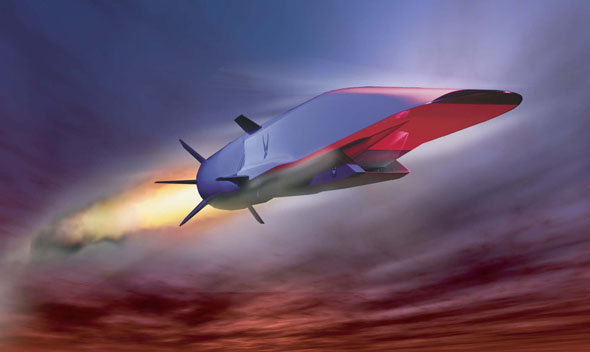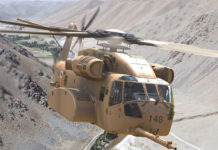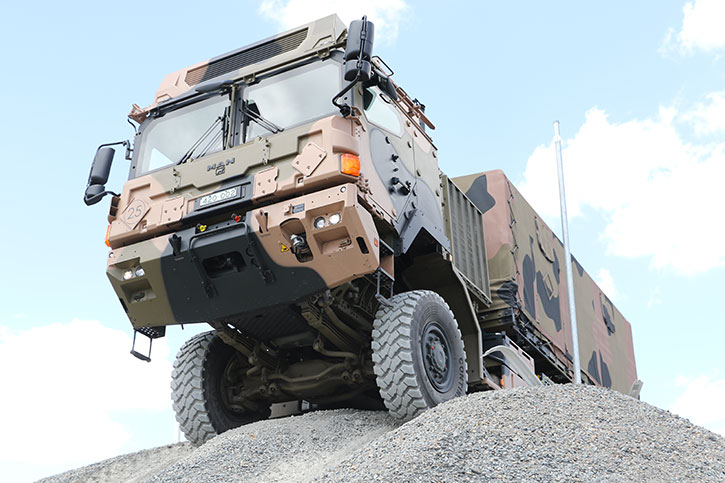
A highly-publicized test flight of a United States Air Force (USAF) experimental aircraft ended in failure on 14 August. The unmanned aircraft, designated the X-51A “Waverider,” broke apart in midair and crashed into the Pacific Ocean only 31 seconds into its test flight.
In the late morning hours of 14 August, a USAF B-52 bomber launched the Waverider successfully while flying over the Point Mugu Naval Warfare Center in California. Once released by the B-52, the Waverider is designed to be powered into flight by a rocket booster to gain sufficient thrust to allow the aircraft’s Scramjet engine to fire-up and drive the aircraft forward into hypersonic speed.
The X-51A was built to reach a hypersonic speed of Mach 6 (3,600 miles-per-hour) or greater, fast enough to travel from New York City to London in less than an hour’s flying time. Most experts classify hypersonic flight as beginning at Mach 5 or five times the speed of sound.
The USAF considers the aircraft to be “irretrievable” since it would crash at the end of its flight even if the flight is successful. The USAF has been using the aircraft as a test bed in a program to develop a new generation of conventionally-armed missiles capable of destroying targets located anywhere in the world within one hour of being launched.
“Waverider” is the name given to the X-51A because the design allows the aircraft to remain airborne by using the lift and thrust created by shock waves emanating from the vehicles own forward motion. The Waverider’s Scramjet engine was built by Pratt & Whitney Rocketdyne and was designed to operate using the vehicle’s forward trajectory to draw compressed air into the engine to facilitate fuel combustion. Boeing’s Phantom Works Division has been responsible for the design and construction of the aircraft itself.
Project engineers had hoped to keep the Waverider aloft for five minutes of powered flight, but the test failed because of a defective control fin according to USAF representatives. Just sixteen seconds after the vehicle’s rocket booster was engaged, sensors warned of a malfunction in a control fin that would prevent test crews from maintaining control of the aircraft.
When the X-51A successfully separated from its rocket booster fifteen seconds later, control of the aircraft was lost and she broke apart and fell into the sea. Failure of the control fin also prevented testers from engaging the Scramjet engine.
A statement released by Charlie Brink, X-51A Program Manager for the US Air Force Research Laboratory (AFRL), announced that failure of the defective fin, a subsystem that had proven reliable in previous tests, prevented testers from engaging the Scramjet. A USAF statement said that “this particular control subsystem had proven reliable in the previous two flights of the X-51A including the historic May 2010 flight when the Waverider flew for more than three minutes at Mach 4.88 under Scramjet power – nearly five times the speed of sound.”
Four Waveriders have been built, but only one remains available for testing. Since this third test flight was the last with funding in the current budget allocations, it is unknown when the fourth vehicle will be scheduled for flight testing.
Program costs are unknown and are not likely to be disclosed since the project is classified.
Pentagon planners have had a long-term interest in the practical use of airborne vehicles capable of achieving hypersonic speeds. US military leaders have expressed their desire to field a hypersonic ballistic missile able to hit a designated target from very long range in a matter of minutes. A missile flying at hypersonic speed would be traveling so fast that existing surface-to-air defense systems would be incapable of stopping it. Thought has been given to development of a hypersonic reconnaissance vehicle that could overfly a mission sight invisible to radar as well.
What lies ahead for the hypersonic project remains to be seen, but it is likely that the United States will continue its development efforts since possession of a successful weapon of this capability would give the US a strategic military advantage unmatched by any potential adversary. Of course, Air Force and national pride will come into play as well.

















